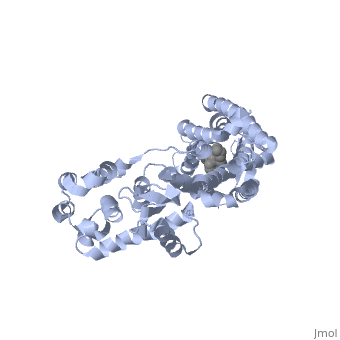Sandbox Reserved 1446
From Proteopedia
(Difference between revisions)
| Line 1: | Line 1: | ||
{{Sandbox_Reserved_Telford2018}}<!-- PLEASE ADD YOUR CONTENT BELOW HERE --> | {{Sandbox_Reserved_Telford2018}}<!-- PLEASE ADD YOUR CONTENT BELOW HERE --> | ||
| - | + | Amyloid | |
<StructureSection load='4ej4' size='340' side='right' caption='Caption for this structure' scene=''> | <StructureSection load='4ej4' size='340' side='right' caption='Caption for this structure' scene=''> | ||
| + | == Background == | ||
| + | Amyloids are accumulated proteins that are folded up into a shape that allows for continual copies to be made of each protein. These proteins then create fibrils that accumulate in the liver of humans, cats, and dogs. Numerous diseases can be credited to the over abundance of amyloid fibrils. Amyloids can be formed by many different proteins and polypeptides. | ||
== Structure == | == Structure == | ||
| - | <scene name='77/778326/Polyubiquitin/1'>Polyubiquitin</scene> | ||
| - | |||
| - | |||
| - | |||
| - | ==Structure== | ||
| - | <scene name='77/778326/Acetylcholine_receptor/1'>Acetylcholine Structure</scene> | ||
== Function == | == Function == | ||
Revision as of 19:36, 30 April 2018
| This Sandbox is Reserved from Jan 22 through May 22, 2018 for use in the course Biochemistry II taught by Jason Telford at the Maryville University, St. Louis, Missouri, USA. This reservation includes Sandbox Reserved 1446 through Sandbox Reserved 1455. |
To get started:
More help: Help:Editing |
Amyloid
| |||||||||||

